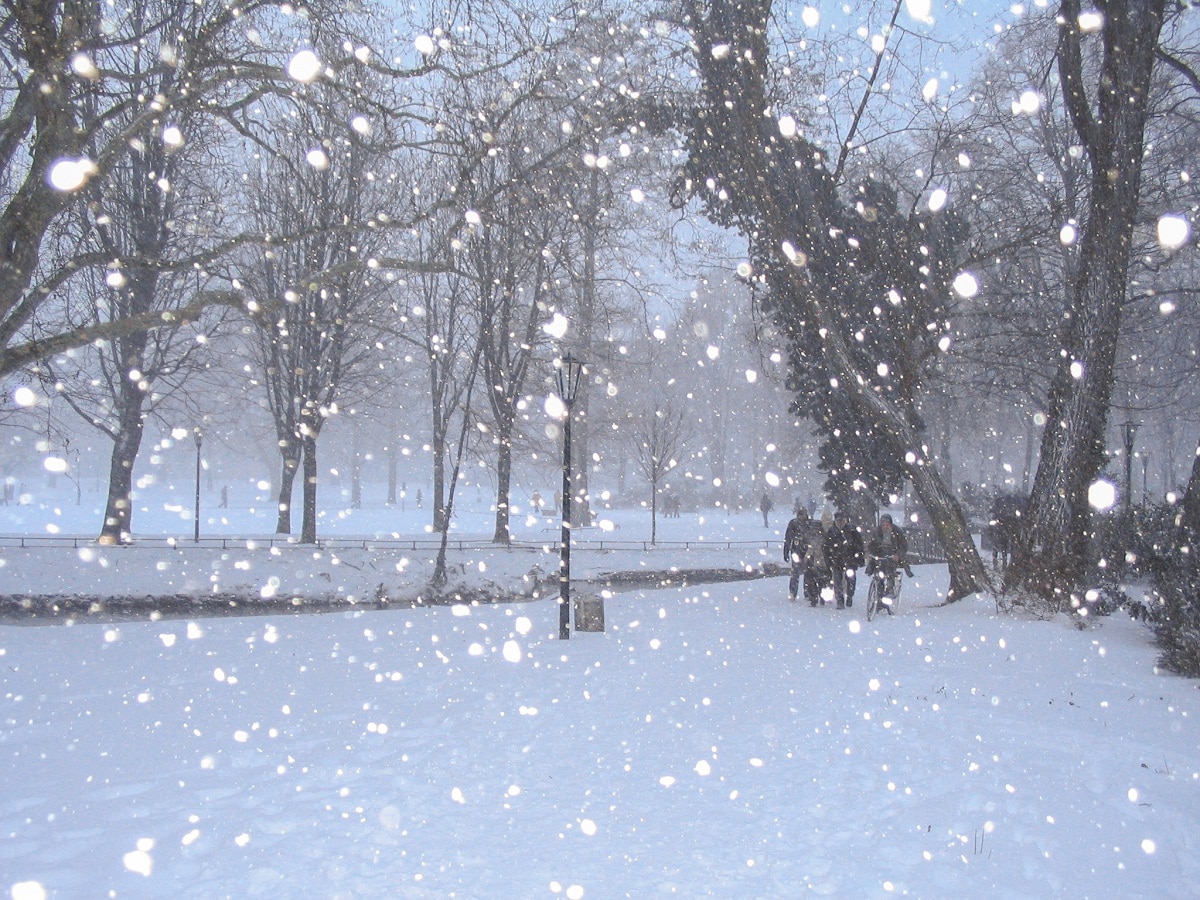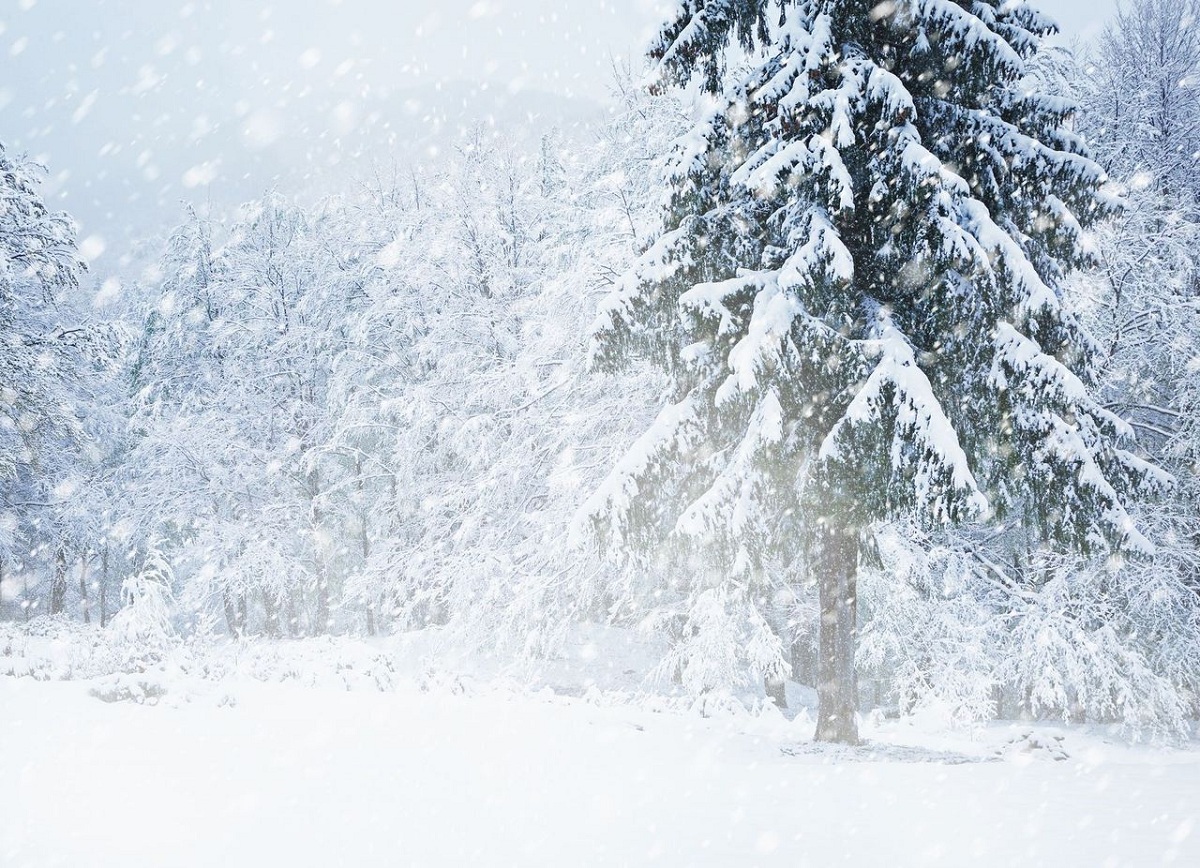
How many liters of rain per square meter is equivalent to the snow that is deposited on the ground at a given time, forming the characteristic white blanket? It is generally accepted that each centimeter of new snowfall is equivalent to one liter of rainwater per square meter collected in a rain gauge, but in most cases this equivalence is a realistic approximation, either due to excess or insufficient. Several factors would intervene, among them the type of snowflakes, the snow density mainly left by snowfall, and the metamorphosis experienced by the snow cover.
For this reason, we are going to dedicate this article to telling you everything you need to know about the density of snow and how it affects populations.
snow density

We have all seen how each snowfall is different and has its peculiarities. Sometimes when conditions are very cold and dry, and if it snows, the snowflakes are very small and dense (snow grains that occasionally fall) and rarely form a large snow cover. The situation changes when the moisture content of the snow-covered air mass is very humid, in which case an occasionally large, fluffy flake (commonly known as "rag") forms. These snowfalls can, at times, accumulate a considerable thickness in a few hours. In each case, the snow density varies widely.
Taking into account that the porosity of the snow cover is inversely proportional to its density, depending on the snowfall that occurs, more or less a few centimeters of snow will be produced, but this is not only due to the number of flakes that settle and accumulate, but these characteristics determine the size of the snow density. Said density can vary from 20 kg/m3 in the case of very cold fresh snow, between 80 and 100 kg/m3 in the case of normal snow (the most common). Up to 180 kg/m3 in cold conditions.
If we keep the numbers above and shoot down the middle lane, the average of the lowest snow density value (20 kg/m3) and the highest snow density value (180 kg/m3) is 110 kg/m3. m3, we can get about 100.
Remembering that the density of liquid water is of 1.000 kg/m3, once the density ratio of 10 to 1 has been established, we arrive at the equivalent that we mentioned at the beginning: 1 cm of new snowfall = 1 mm of rain. With a little more detail, we can improve the estimate.
snow blanket

On the one hand, the arithmetic mean that we take between the two extreme densities of fresh snow must be a weighted mean, where, based on the statistics of the type of snow that is produced, we will know what the percentage is. For each type, what is the frequency distribution of very cold, normal, and very wet snowfall? Some time ago, they conducted a detailed field investigation of the snow disaster in the United States. They reached a new equivalence that is closer to the reality of the data, and that is that the average density of new snowfall is slightly lower, so one millimeter of rain is equivalent to 1,3 centimeters of snow.
It's not a bad approach, but it doesn't end there, as it only works on fresh snow. Once snow stops falling, the mantle undergoes a rapid transition, which translates into a gradual increase in the density of the snow deposited, both due to compaction by its own weight and due to the most recent morphological change. Snow, from above. The density of snow increases with time, so if we were to estimate the water equivalent of snow by measuring the thickness of a layer of snow that deposited for hours or days, these ratios would not be 10:1 or 13:1. It can only be considered valid for fresh snow (as a first approximation).
how much snow weighs

When it rains, the terraces do not have to support all the water that rises and falls, since the water goes to the sewers. The snow accumulates, however, so the structure must support an incalculable weight. No two pieces are the same. Some are bigger than others. In addition, some weigh more than others depending on the temperature and humidity conditions of the precipitation.
Thus, the weights are known only by approximations based on experiments. In this sense, the basic building regulations reflect that it varies according to the state of the snow: 120 kg/m3 for fresh snow, 200 kg/m3 for crushed or soaked snow, and 400 kg/m3 for snow mixed with hail.
Density of the snow and the weight that the terraces support
Balconies and patios are often built with different loads in mind, including snow, so snow buildup shouldn't be a problem. However, some weaker buildings can be problematic. The snow overload that a building has to support on a horizontal surface exposed to the elements will depend on the altitude at which the population is located.
In this sense, the minimum you have to bear a place is 40 kg/m2 located from 0 to 200 meters of altitude because it could snow at sea level, as complicated as it may seem. From 201 to 400 meters, the snow load must be at least 50 kg/m2, and from 401 to 600, 60 kg/m2. From here, increase by 20 kg/m2 for every 200 meters above sea level.
From 1.200 meters of altitude, the overload will be the height divided by 10. So, for example, a house built at an altitude of 3.000 meters has to support a weight of 300 kg/m2.
For sloped roofs the same calculation applies. For roofs with a slope of more than 60 degrees, the snow load on the surface is zero, since the snow is estimated to be slippery. On lower slopes, the weight that must be supported is that corresponding to the height of the town The product of the load and the cosine of the angle of the roof.
I hope that with this information you can learn more about the density of snow and how it affects the population.